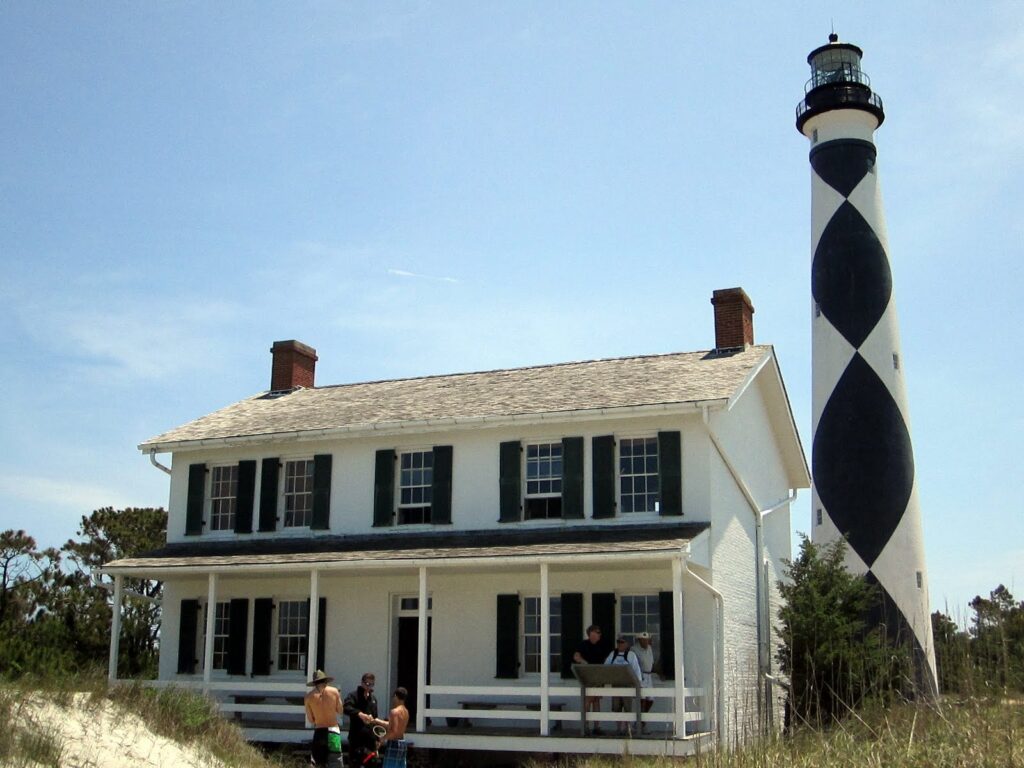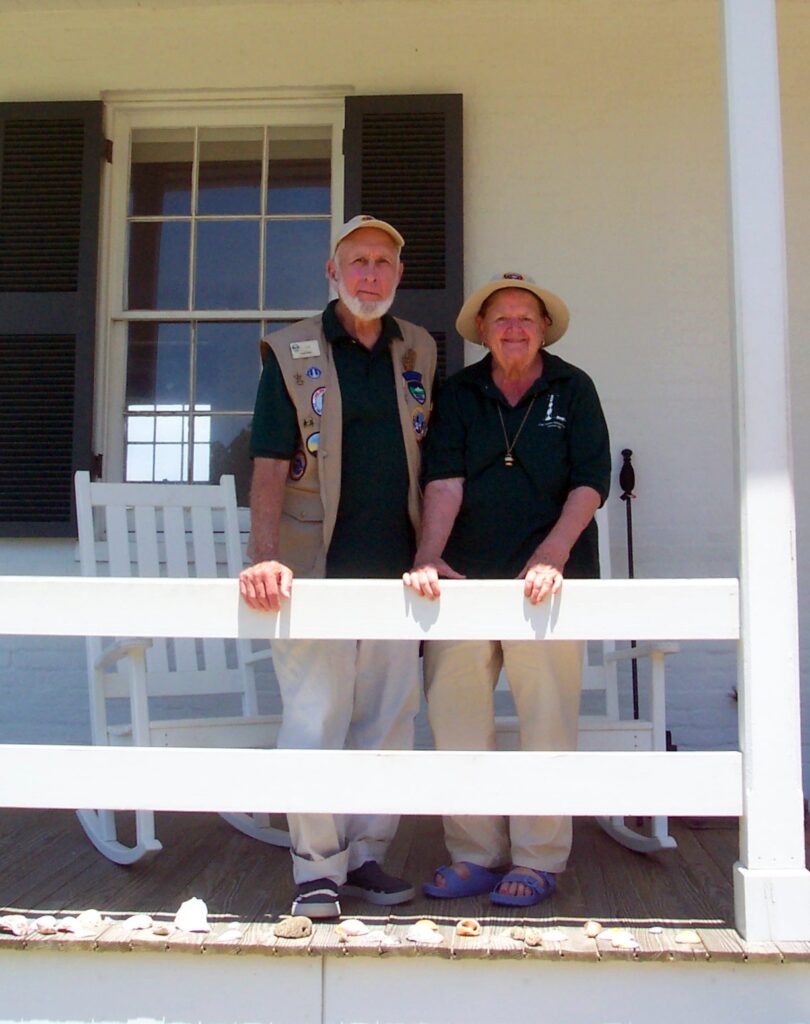Summer of 2022 found Jack and Tobi once again on the Atlantic Coast, this time at the Cape Lookout lighthouse, the southern-most of the tall brick towers along North Carolina’s Outer Banks. Located within the Cape Lookout National Seashore, it is owned and cared for by our National Park Service. The photo above is the view from the lighthouse gallery looking South-west towards the Core Banks Sound. The open Atlantic can be glimpsed in the upper left. Located on the long sweeping cape for which it is known, the lighthouse is accessible only by private boat or by the commercial ferry out of Harker’s Island, which itself is reached by a bridge from the NC mainland

This lighthouse is one of the four brick lighthouses located along the North Carolina coast. it was the first of the four, followed by almost identical towers at Cape Hatteras, Bodie (pronounced “body”), and Currituck. All are made of red brick, and when first built were left that way. It soon became apparent that it was difficult for the mariner at sea to tell one from another. Thus the very unique system of “daymarking” these towers was devised by the then Lighthouse Establishment. Cape Lookout’s “Checkers” markings are unique. There isn’t another lighthouse in the U.S. with this design. It is also unique in that the tower acts as a compass. The black Checkers are on the north and south sides of the tower, while the white ones are on the east and west sides.
The Cape Hatteras lighthouse, the next one north, has a black and white spiral marking, while Bodie Island, yet farther north, has black and white vertical bands. The northernmost of the tall towers, that at Currituck, has never been painted and remains a red brick lighthouse tower, which easily distinguishes it from the others.
The present Cape Lookout lighthouse, first lit with a Fresnel lens in 1859, is actually the second one here. The first lighthouse, built nearby in 1812, proved to be too short to be seen from far enough away. The keeper’s house, seen in the photo above, was built in 1873, soon after the present tower, and replaced the house that had served the original keeper. This new one housed a head keeper and an assistant for many years. Today it features a small museum on the lower floor, while the upper floor are lovely quarters for visiting volunteers. The photo below is of Jack and Tobi in their lighthouse docent role on the porch of the keeper’s house.

In addition to the lighthouse tower and keeper’s house, a separate “summer kitchen” and woodshed building, and a concrete “oil house” where kerosene for the lamps was stored in pre-electric days also remain.
